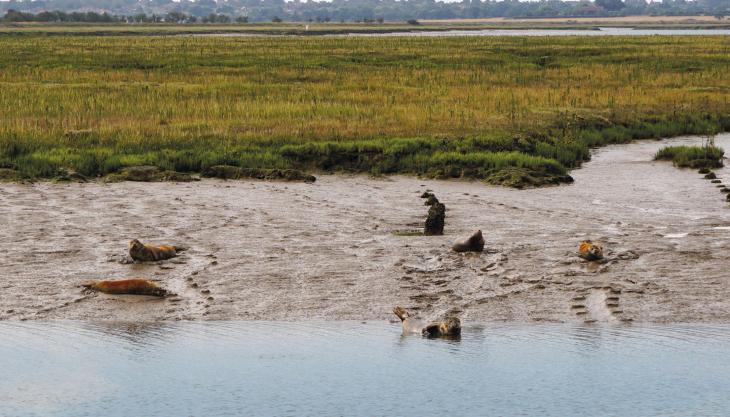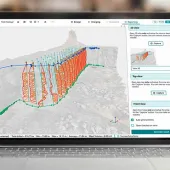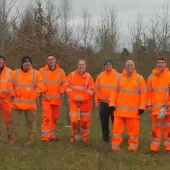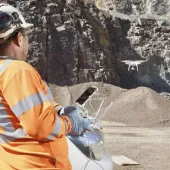EPC-UK begin scientific ‘Seal Watch’

Company taking steps to continually monitor and improve seal habitat at its Bramble Island site
CONTINUING their endeavours to protect and support the indigenous wildlife that lives within their operations’ land and farming estates, explosives, blasting and chemicals manufacturers EPC-UK have reported a positive outcome from recent scientific observations made on seal populations inhabiting the shoreline close to their Bramble Island site.
Taking steps to continually monitor and improve the habitat and breeding conditions for all wildlife living within their operating sites, EPC-UK actively observe and improve natural environments, monitoring behaviours as well as species’ population numbers.
Michelle Miller, general manager at Bramble Island, heads the company’s 'seal watch' team: ‘It’s our privilege to act as custodians of this wonderful environment, doing all we can to ensure the myriad species we are lucky enough to have living within our site’s boundaries thrive,’ she said.
‘Our Bramble Island operation is situated on Hamford Water – an area within the Thames Estuary – and we consider it an honour to share the shoreline with local populations of harbour and grey seals, whom together live in the sheltered waters, sandbanks and estuary habitat our Bramble and Oakley creeks provide.’
Ms Miller explained that under UK legislation, seals are protected by the Conservation of Seals Act 1970, which helps to safeguard mammals from 0 to 12 nautical miles from shore. The species are also protected under international legislations, as well as specific European regulations – which require the designation of Special Area of Conservation (SAC) to protect the mammals’ interests.
There are 12 designated SACs within the UK for which harbour seals are a listed species. Whilst the seal population within Hamford Water does not fall within one of these areas, the location is still categorized as a UK SAC, as it has a resident ‘universe’ of Fisher’s estuarine moths. In addition, the site is registered as a Special Protection Area (SPA) owing to its seasonal influx of migratory wading seabirds.
To ensure that EPC-UK are doing all they can to safeguard the seals and monitor the colonies’ welfare, the company has commissioned environmental consultants Ocean Ecology Ltd (OEL) to produce a map of the seals’ distribution and estimated numbers, make general observations of seal behaviour and, in the process, monitor any activities that might potentially impact the species’ health, population and haul-out selection areas.
Using an unmanned aerial vehicle combined with the more traditional research tools of kayaks and observations 'on foot’, the OEL team has gathered insightful information and data, providing EPC-UK with recommendations to improve monitoring and continue supporting the seal population moving forward.
This independent survey is, in turn, shared with the Environment Agency whose role it is to regulate business’ impact on the environment.
Ms Miller explained: ‘The overarching aim of this project has been to undertake a survey of the local seal population within Bramble Creek and the surrounding areas adjacent to EPC-UK-owned land. It’s been an invaluable exercise, revealing that our land’s resident seal population appears to be considerable, with variations in numbers depending on the day and tide.
‘We’ve learnt that the harbour seals are our most dominant species, however grey seals are present too, and often both breeds can be seen within the creek boundaries. Naturally, we wouldn’t wish any of our activities to impact on the animals, and part of the reason for bringing OEL on board has been to ascertain whether or not the seal colonies are at all affected by our work.
‘The OEL team reported that the seals inhabiting the creek appear to be in good health and that animal behaviours did not suggest any signs of distress or disturbance as a consequence of having EPC-UK as their neighbours. In fact, the seals’ activities are typical of those seen within normal species populations.’
Ms Miller confirmed that the team at Bramble Island will continue to monitor the seals as an educational exercise to better understand the colonies and encourage their populations’ development and utilization of the Bramble Creek and Oakley Creek areas.
‘It’s great to learn that population numbers are high on the shoreline,’ she added. ‘We hope to keep it that way, so plan to maintain the integrity of the creeks, minimize any disturbance to the local environment and limit access to the seawall so admittance is allocated for essential operations only.
‘By putting practices such as these in place and continuing to carefully monitor the colonies’ activities and behaviours, we hope to keep our special seal population in the best health we possibly can. Having respect for the environment in which our business operates is one of EPC-UK’s core business values.’









